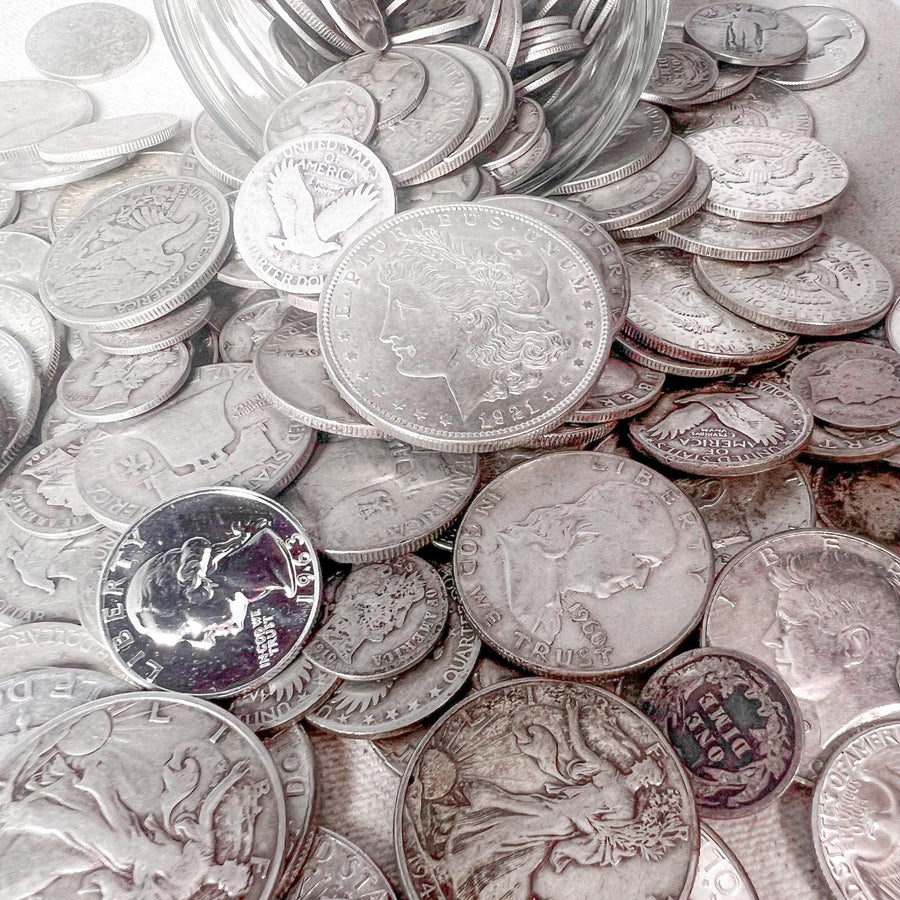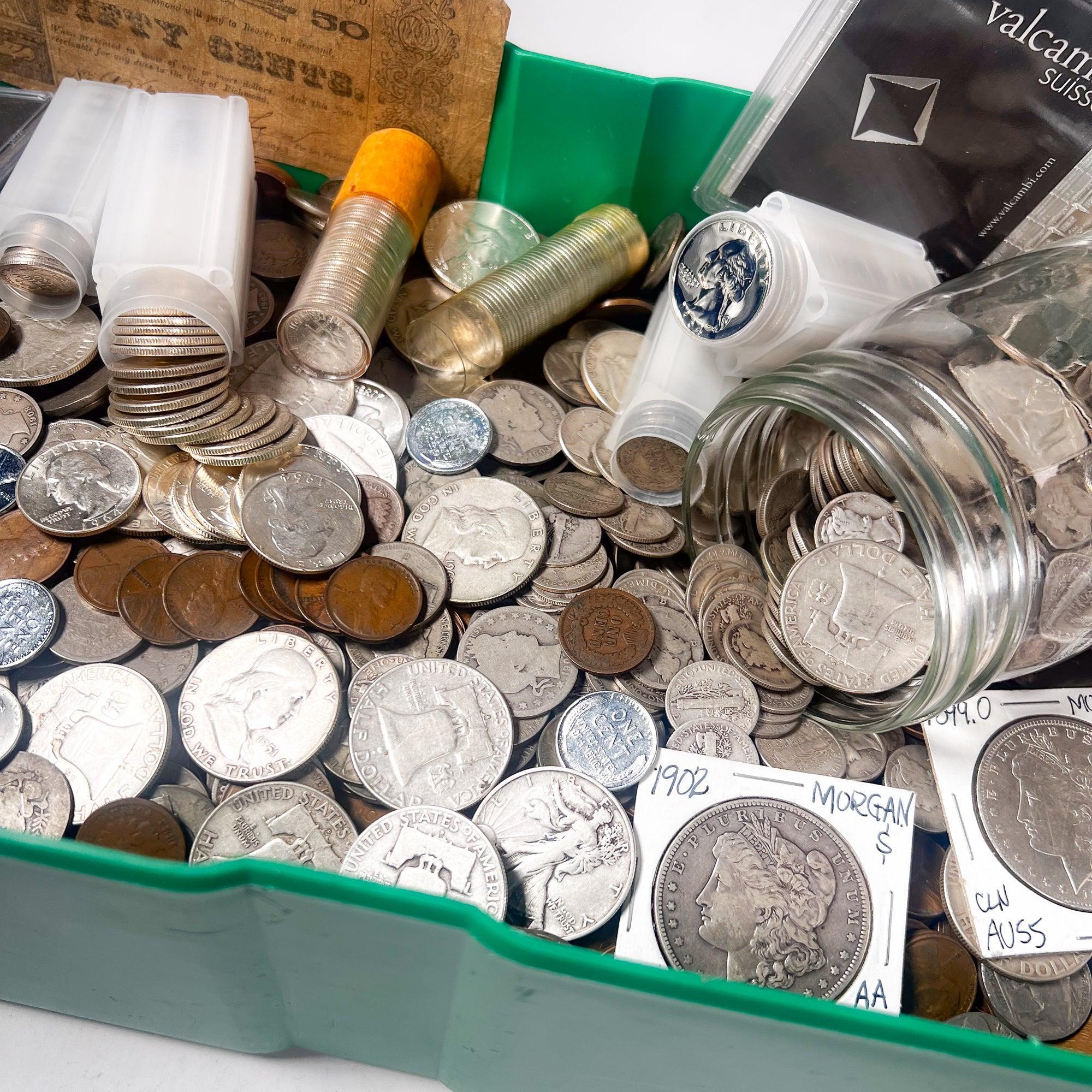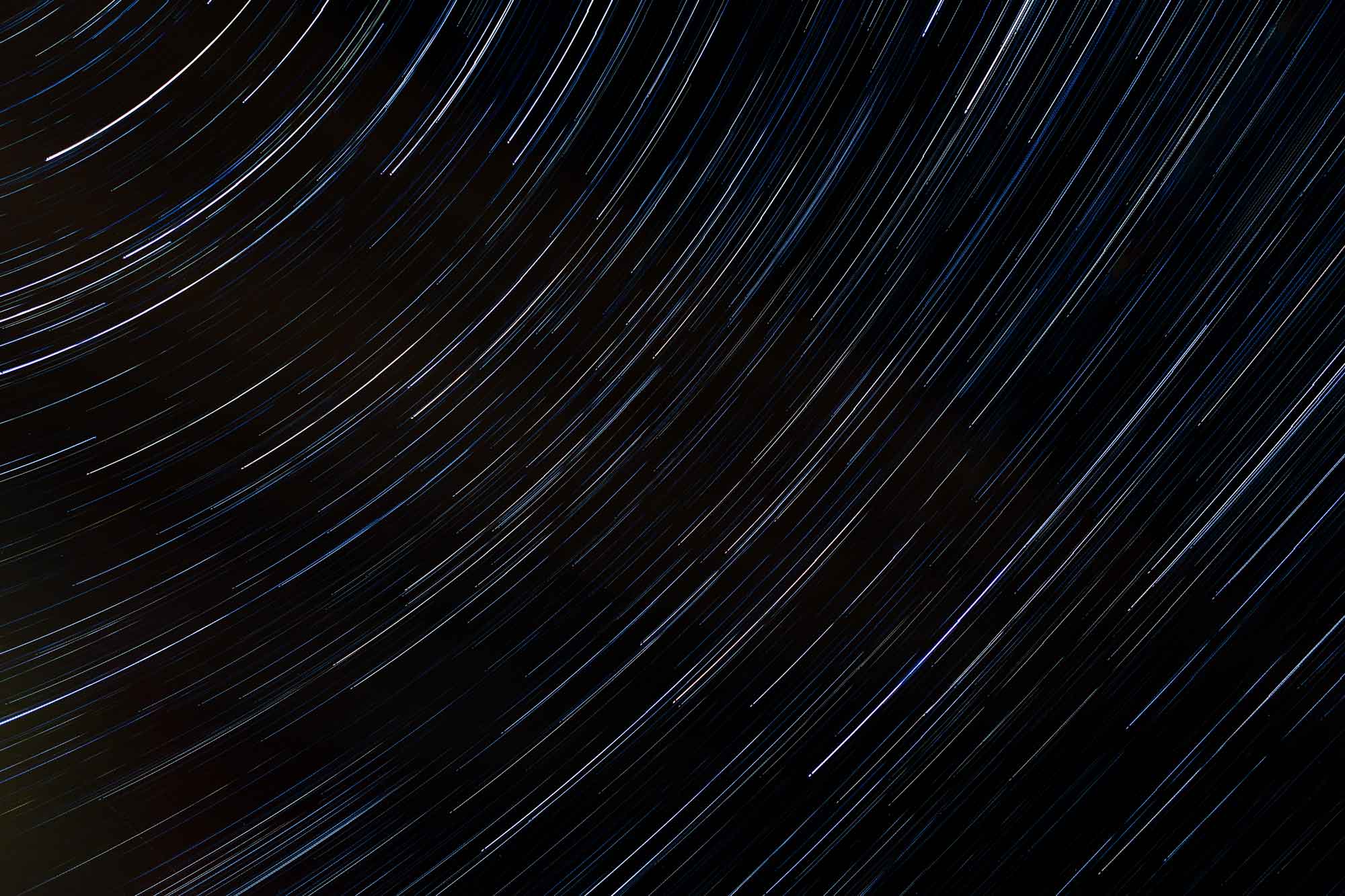The Reign of Silver: Uncovering the Allure of the Morgan Dollar
At Midwest Precious Metals Exchange, we know that some coins don't just tell a story – they embody an entire era. The Morgan Silver Dollar is one such coin. Minted during a pivotal time in American history, this large, iconic silver coin is a favorite among collectors and a testament to the nation's burgeoning economic power.
If you've ever held a Morgan Dollar, you understand its captivating presence. But what makes these silver beauties so endlessly fascinating? Let's explore the world of the Morgan Dollar!
What is a Morgan Silver Dollar?
The Morgan Silver Dollar is a United States dollar coin minted from 1878 to 1904, and then again in 1921. It was the first standard silver dollar minted since the passage of the Coinage Act of 1873, which effectively ended the free coining of silver and created a temporary hiatus in silver dollar production. The coin is named after its designer, George T. Morgan, a talented English engraver who became the seventh Chief Engraver of the U.S. Mint.
What Does a Morgan Dollar Look Like?
The obverse (front) of the Morgan Dollar features a majestic profile portrait of Lady Liberty, depicted as a classical figure with a Phrygian cap, a laurel wreath, and a small eagle on her head. The reverse (back) showcases a heraldic eagle with outstretched wings, clutching arrows and an olive branch, symbolizing war and peace. Below the eagle, the mint mark (if any) is located.
Why Were Morgan Dollars Minted?
The minting of Morgan Dollars was largely driven by the Bland-Allison Act of 1878. This act required the U.S. Treasury to purchase between two and four million dollars' worth of silver each month and coin it into silver dollars. This political compromise aimed to appease powerful silver mining interests in the West and inflationists who advocated for a bimetallic standard.
Are Morgan Dollars Made of Pure Silver?
No, they are not pure silver, but they contain a substantial amount! Each Morgan Dollar is composed of 90% silver and 10% copper. This alloy made the coins more durable for circulation. Each coin contains 0.77344 troy ounces of pure silver. This intrinsic silver content is a major factor in their appeal to both collectors and investors.
What Years Were Morgan Dollars Produced?
Morgan Silver Dollars were initially minted from 1878 to 1904. After a seventeen-year hiatus, production resumed for one final year in 1921. This 1921 issue is unique as it includes coins from all three active mints at the time (Philadelphia, Denver, and San Francisco), making it one of the highest mintage years.
What Makes Morgan Dollars So Collectible?
Their age, striking design, historical context, and precious metal content all contribute to their immense popularity. Collectors are drawn to:
-
Key Dates and Rarities: Certain years and mint marks are significantly rarer and more valuable due to lower mintages (e.g., 1893-S, 1889-CC).
-
Mint Marks: Morgan Dollars were produced at the Philadelphia (no mint mark), San Francisco (S), New Orleans (O), Carson City (CC), and Denver (D, only in 1921) Mints. Carson City "CC" mint mark dollars are particularly sought after.
-
Condition and Luster: Uncirculated coins with strong luster and minimal bag marks command significant premiums.
-
VAM Varieties: Named after Leroy C. Van Allen and A. George Mallis, VAM numbers identify specific die varieties (e.g., clashed dies, repunched mint marks). These can add an exciting layer to collecting.
How Can You Determine the Value of a Morgan Dollar?
The value of a Morgan Dollar depends on several factors:
-
Date and Mint Mark: As mentioned, some combinations are much rarer.
-
Condition/Grade: A professional grade (e.g., AU-50, MS-63, MS-65) by services like PCGS or NGC significantly impacts value. Uncirculated (Mint State - MS) coins are always worth more.
-
Luster: Original, vibrant cartwheel luster is highly desirable.
-
Toning: While some collectors prefer brilliant coins, attractive, natural toning can enhance a coin's appeal and value.
-
VAM Variety: If a coin exhibits a recognized VAM variety, it can increase its desirability.
-
Current Silver Price: The intrinsic silver value sets a floor for the coin's worth.
What are Some "Key Date" Morgan Dollars to Look For?
While many Morgan Dollars are common, some are considered significant rarities:
-
1889-CC: A very low mintage from the Carson City Mint, highly prized.
-
1893-S: One of the undisputed "keys" of the series, with an extremely low mintage.
-
1895 (Proof Only): No business strike 1895 Morgan Dollars are known to exist, only a small number of proof coins, making it incredibly rare.
-
1893-O: Another low-mintage coin from New Orleans.
-
1878-CC (with 7/8 Tailfeathers variety): Early Carson City issue with a unique feather count on the eagle.
Where Can You Buy and Sell Morgan Silver Dollars?
Midwest Precious Metals Exchange is an excellent resource for both buying and selling Morgan Silver Dollars. We offer a curated selection of these magnificent coins, from common dates perfect for starting a collection to graded key dates for the advanced numismatist. When you're ready to sell, our experts provide fair and transparent valuations.
Preserve a Piece of American History!
The Morgan Silver Dollar isn't just a coin; it's a tangible piece of American expansion, economic policy, and artistic engraving. Holding one allows you to connect with the late 19th and early 20th centuries, a time of immense change and growth for the United States.
Whether you're looking to invest in silver, appreciate historical artistry, or complete a numismatic collection, the Morgan Silver Dollar offers unparalleled appeal.












